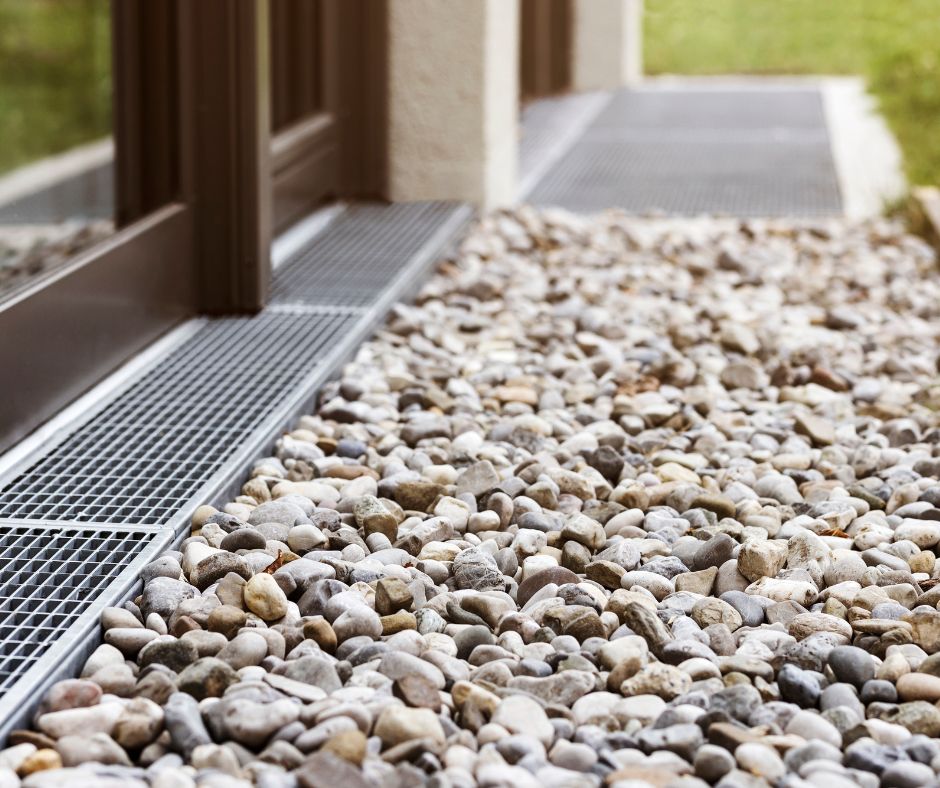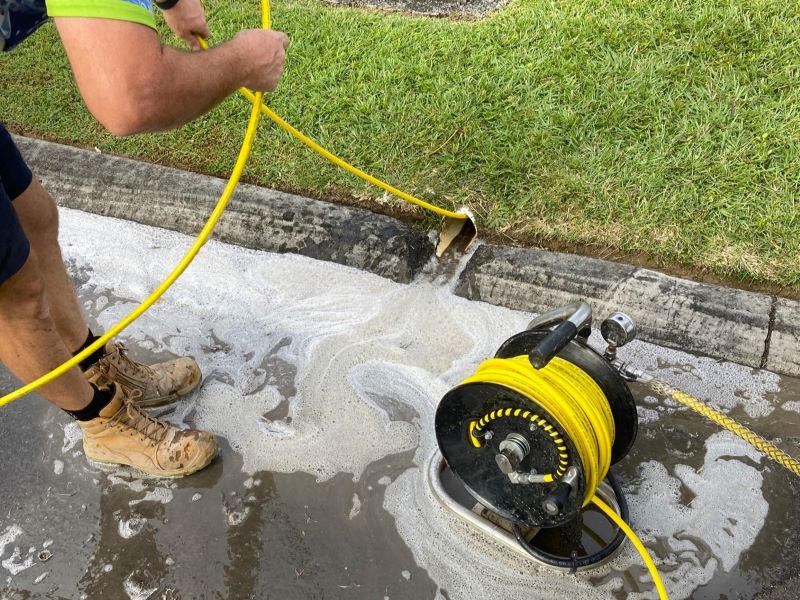Stormwater drainage systems are crucial for maintaining the integrity of your property, encompassing a variety of structures such as roof plumbing drainage, French drains, spoon drains, and strip drains. These systems are essential in preventing water damage and effectively managing stormwater runoff. Regular maintenance is not just advisable; it is vital. Neglecting these systems can lead to severe consequences, including blocked drains and flooding, which can cause extensive property damage. From dealing with clogged grates to invasive roots in your plumbing, proactive maintenance strategies can significantly reduce the risk of complications and expensive repairs. Therefore, it is critical to understand the best practices for maintaining these systems to safeguard your home against potential water-related issues.
This guide offers a comprehensive overview of how to maintain your drainage systems effectively and provides actionable steps to take when you encounter a blockage.

Actionable Maintenance Techniques for Traditional Stormwater Drains
Traditional stormwater drains are essential components of many properties, designed to channel rainwater away from structures to prevent flooding. Over time, these systems can become obstructed by debris such as leaves, dirt, and branches, which can severely impede their effectiveness. To ensure that water flows freely and does not accumulate near your home’s foundation—where it can cause serious structural problems—consistent maintenance is vital. By developing a regular upkeep routine, you can not only extend the lifespan of your drainage systems but also enhance their efficiency during heavy rainfall, ensuring that your property remains protected from potential water damage.
Proven Tips for Maintaining Traditional Drains:
- Consistently clear the grates and gutters: Regularly remove leaves and debris, especially after storms, to maintain unobstructed water flow.
- Watch for signs of pooling water: Be vigilant for standing water near your drains, which may signal a blockage. Also, keep an eye out for unusually soggy areas in your garden that could indicate drainage issues.
- Utilize professional services: Schedule routine inspections and cleanings with a reputable plumber, such as Creek to Coast, to ensure your drains operate optimally and help prevent future problems.
Essential Guidelines for Maintaining French Drains Effectively
French drains are expertly designed to efficiently redirect groundwater away from your home and retaining walls, making them critical for effective moisture management. However, these underground systems demand regular attention to prevent clogs that may disrupt their function. Composed of gravel and a perforated pipe, French drains are adept at diverting water, but they can become obstructed by dirt, sediment, and invasive roots over time. To ensure their longevity and operational efficiency, proper maintenance is indispensable, as it helps prevent issues that could lead to costly repairs down the line.
Key Maintenance Recommendations for French Drains:
- Monitor for slow drainage: If you notice that water is not draining as it should, this could indicate a clog that requires immediate attention to prevent exacerbating the issue.
- Regularly flush the system: Periodically flushing the drain with water can help eliminate potential blockages before they develop into serious problems that impede drainage.
- Contact professional cleaning services: If sediment buildup or root intrusion becomes evident, reach out to Creek to Coast for thorough cleaning, which may involve hydro-jetting tools for effective removal of obstructions.
Best Practices for Caring for Spoon Drains
Spoon drains are designed with shallow, curved channels to efficiently guide surface water away from driveways, patios, and other paved areas. Although they typically require minimal upkeep, it is crucial to regularly attend to them to prevent blockages. Neglecting to clear these channels can result in water pooling on your property, leading to potential damage over time. By adopting simple yet effective maintenance habits, you can ensure that your spoon drains remain functional and continue to serve their purpose effectively.
Maintenance Strategies for Spoon Drains:
- Keep the channel free of debris: Regularly sweeping away leaves, dirt, and other materials will help maintain uninterrupted water flow. Utilizing a high-pressure washer can also be particularly effective for thorough cleaning.
- Check the slope inclination: Ensure that the slope of the spoon drain is intact and functioning as intended, as gravity is essential for directing water away effectively.
- Inspect for any signs of damage: Regularly examine the drain for cracks or breaks, which can occur due to vehicular traffic and may need prompt repair.
- Request a professional assessment: If you notice any issues with drainage efficiency, consider calling Creek to Coast for a professional evaluation to make necessary adjustments or repairs.
Important Maintenance Steps for Linear Drains
Linear drains, often referred to as trench drains, are strategically placed in locations such as driveways and pool decks to capture surface runoff efficiently. While these drains effectively prevent water accumulation, they can gather debris over time, making regular cleaning essential for maintaining their functionality. Establishing a consistent cleaning routine is vital to prevent blockages that can lead to water pooling and property damage, thereby ensuring the drains perform optimally and prolonging their lifespan.
Maintenance Tips for Linear Drains:
- Regularly clean the grates: Keep an eye on the grates for any accumulation of dirt, leaves, or debris that may obstruct flow, and remove these blockages when necessary.
- Flushing the system regularly: Routinely running water through the drain helps ensure that it flows correctly and that no blockages persist.
- Consider engaging professional maintenance: If you experience backups or sluggish drainage, don't hesitate to contact Creek to Coast for expert cleaning services to effectively remove deep clogs and debris.
Immediate Actions to Take When Encountering Blocked Drains
Despite your diligent maintenance efforts, blockages can still arise in any drainage system. Signs such as water pooling, slow drainage, or overflowing grates indicate that immediate action is essential to prevent further complications. By recognizing common causes of blockages, you can quickly identify the issue and implement appropriate solutions to resolve it effectively.
Common Causes of Drain Blockages Include:
- Tree roots: Roots can infiltrate underground pipes, creating significant blockages that disrupt water flow and drainage.
- Accumulated debris: Leaves, dirt, and other environmental materials can build up over time, obstructing the flow of water through your drainage system.
- Damaged pipes: Broken or crushed pipes can severely restrict water flow and often require immediate professional intervention.
When faced with a blockage, it is advisable to consult a professional plumber like Creek to Coast. They utilize advanced tools, such as high-pressure water jetters and CCTV cameras, to accurately diagnose and resolve the issue. Attempting to clear a blockage on your own can worsen the problem, especially if the pipes are damaged or roots have infiltrated the system.

Comprehensive Maintenance Strategies for Various Stormwater Drain Types
To maintain the effectiveness of your stormwater management systems—whether traditional, French, spoon, or linear drains—consider implementing the following comprehensive strategies:
- Schedule annual inspections and cleanings with a licensed plumber like Creek to Coast. This proactive approach helps to remove debris and identify potential problems before they escalate into major issues.
- Keep an eye on water flow: After heavy rainfall, check your drains for any pooling or slow drainage, as these could indicate underlying issues that require attention.
- Install gutter guards and grates to prevent larger debris from clogging your drains, which can reduce the frequency of blockages and maintenance needs.
- Maintain distance from plants and trees: Roots from nearby trees can invade and obstruct pipes, thus ensuring that vegetation is kept at a safe distance from your stormwater systems is essential.
Regular plumbing maintenance and prompt responses to drainage issues are vital for protecting your property from water damage and ensuring that your drainage systems operate smoothly and efficiently. If you observe any signs of blockage, do not hesitate to contact Creek to Coast for expert assistance in keeping your stormwater drains flowing seamlessly!
The Article: Stormwater Clarity: Essential Drain Maintenance Tips first appeared on https://writebuff.com.
The Article Drain Maintenance Tips for Stormwater Clarity Was Found On https://limitsofstrategy.com
Comments are closed